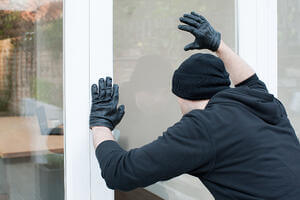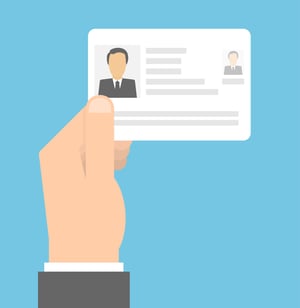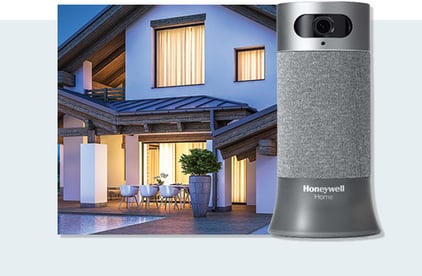How To Protect Against Doorstep Scams
Even though many legitimate businesses and charities call at people’s doors, there are, unfortunately, fraudulent cold callers.
What’s a doorstep scam?
A doorstep scam or fraud is someone tricking you out of your money or sensitive information when you answer your door. While you can easily escape other forms of scams, such as phone, postal, and online scams, doorstep scams can sometimes be more challenging.
In fact, the pressure you face from a doorstep scammer makes it account for five percent of all scams committed. Also, the UK reported 17,264 doorstep crimes between 2014 and 2015.
Types of Doorstep Scams
The growing rate of this crime is partially due to the multiple ways that a doorstep scammer can attempt to get into your home. Some ways include:
Distraction, Burglary, or Bogus Calling
Distraction burglary or bogus calling happens when a person pretends to be someone they're not as a tactic to gain access to your home.

Bogus callers may work in pairs — one person engages you at the door, while the door gains entry through the raise or back. They may also pose as:
- - Strangers who claim to need help because of an emergency
- - Officials in your area, such as gas or electricity meter readers
- - People doing consumer survey
- - Charity collectors
This type of doorstep crime has been around for a while. Denmark saw the number of distraction burglaries increase by 137 percent in ten years.
Bogus Salesmanship
A bogus salesperson uses creative tactics to pressure you into buying something you don't want or need. They will provide a false ID or contact information that’ll make it impossible to reach them.
The fake contact information also makes it challenging to get your money back.
With so many tricks up a doorstep fraudster’s sleeve, how can you remain safe?
Be on Guard
To avoid falling victim to doorstep scams, you should always be on guard. Simply put, you should be suspicious of uninvited guests and unfamiliar faces.
If you answer the door and see an unfamiliar face who intends to enter your home, say "no." Since doorstep scammers can be quite persuasive, you need to be firm with your refusal.
You can politely ask them to leave your property. But if the caller refuses to listen, threaten to call the authorities. If they persist, call the police or any relevant local authority.
Put Up a Sign
You can alternatively put up a sign near your front door or window to protect yourself against doorstep fraudsters. The poster should clearly state that uninvited guests are unwelcome.
The sign should deter any cold callers from approaching or knocking on your door.

Ask for Credentials
If a caller knocks at your door and claims to be a repairman, ask for some form of credentials. An ID card, company card, or paperwork should suffice.
Why is it important?
It confirms that they’re following the law that requires them to hold an identification. You can also ensure that they’re who they claim they are with the ID — from their supposed names to the card's picture.
If you’re still in doubt, phone the company the doorstep caller claims to be representing. But instead of using the number they give you, get out the phone book and find the company’s number.
A more straightforward option is to keep your utilities service provider's number nearby. That way, you can easily phone them and confirm an official’s identity.
In case your doorstep caller claims to be a charity collector, you can check out the charity’s authenticity by:
- - Looking online for their information
- - Checking for their phone number
- - Calling to confirm that the collection is real
Use The Neighbor System
The neighbor system or the Nominated Neighbor scheme, allows residents to select one of them to deal with cold-callers or doorstep visitors.
A sign would direct doorstep callers to contact a specific neighbor before speaking directly to the resident.
In other situations, a doorstep visitor is handed a card instructing them to contact a resident’s Nominated Neighbor. The neighbor will then try to check out the caller’s identity.
If everything checks out, the cold-caller will be allowed to connect with the resident directly.
Initiate a Password System
You can set up a password with your electricity, gas, and internet providers to verify an official’s authenticity. In other words, you’re safe from doorstep scams if the caller is aware of your password.
How can you get started?
You can phone your utility company to ask for a password system to be arranged. There might be extra pecks if you’re of pensionable age, have a visual or hearing impairment, or have long-term ill health.
Secure Your Home
Securing your home can protect you against doorstep scams.
How does it work?
For starters, you can purchase a high-security door chain. This protection means you don’t need to open the door fully before you speak to doorstep callers.
It also makes it difficult for doorstep fraudsters to barge through the door as soon as you unlock it. You can also ensure that all other entry points are locked before answering the front door.
That step will deny bogus callers, who may be working in pairs, entry into your home.
Install A Home Security Device
Installing home security devices is one of the surest ways to prevent doorstep crimes. Homes with no or low-level security have seven times and 75 percent more burglaries than homes with high-level security.
How do you know that a security device is high-level?
Just like a GVTC connectHome system, your home security device should provide these features:
- Motion sensor: Receive instant SMS and email notifications when a visitor approaches your residence.
- Security camera: Stream the doorstep interaction in real-time and store the video if you need to refer to it.
- Communication: A visual and audio access control system allows you to see and speak to doorstep callers without compromising your security.
You can click here to find a qualified security professional from GVTC to get you started.

